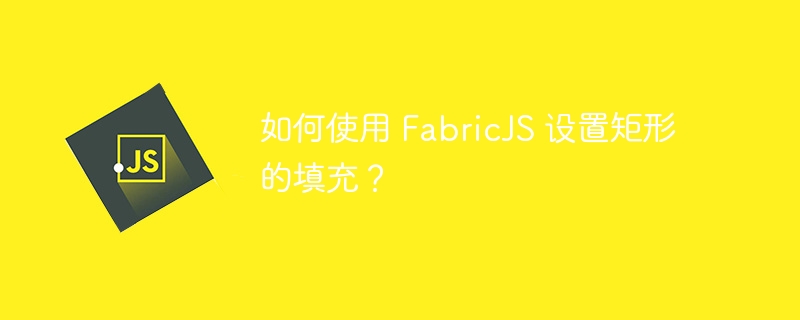

In this tutorial, we will learn how to set the padding of a rectangle using FabricJS. Rectangle is one of the various shapes provided by FabricJS. In order to create a rectangle, we must create an instance of the fabric.Rect class and add it to the canvas.
Just like we can specify the position, color, opacity and size of the rectangular object in the canvas, we can also set the fill of the rectangular object. This can be done using the padding attribute.
new fabric.Rect({ padding : Number }: Object)Options (optional) - This parameter is an object which is our rectangle Provides additional customization. Using this parameter, you can change properties related to the object for which padding is an attribute, such as color, cursor, stroke width, and many other properties.
Fill - This property accepts numeric values. The specified value determines the distance between the rectangular object and its controlling bounding box.
Default appearanceDoes not use padding
Let’s look at a code example, It shows the appearance of a rectangular object when the padding property is not used. As we can see, there is no space between the object and its surrounding control boundaries. This means there is zero padding between the rectangle and its controlling border.
<!DOCTYPE html>
<html>
<head>
<!-- Adding the Fabric JS Library-->
<script src="https://cdnjs.cloudflare.com/ajax/libs/fabric.js/510/fabric.min.js"></script>
</head>
<body>
<h2>Default appearance when padding is not used</h2>
<p>You can select the rectangle to see there is no space between the object and its controlling borders.</p>
<canvas id="canvas"></canvas>
<script>
// Initiate a canvas instance
var canvas = new fabric.Canvas("canvas");
canvas.setWidth(document.body.scrollWidth);
canvas.setHeight(250);
// Initiate a rectangle object
var rect = new fabric.Rect({
left: 55,
top: 90,
width: 170,
height: 70,
fill: "#ffb347",
stroke: "#191970",
strokeWidth: 5,
});
// Add it to the canvas
canvas.add(rect);
</script>
</body>
</html>Passing padding property as key
In this example, we are passing padding property as key with value 7. this Indicates that the distance between the rectangular object and all its objects is 7px Control boundaries.
<!DOCTYPE html>
<html>
<head>
<!-- Adding the Fabric JS Library-->
<script src="https://cdnjs.cloudflare.com/ajax/libs/fabric.js/510/fabric.min.js"></script>
</head>
<body>
<h2>Passing padding property as key</h2>
<p>You can select the rectangle to see the padding between the object and its controlling borders.</p>
<canvas id="canvas"></canvas>
<script>
// Initiate a canvas instance
var canvas = new fabric.Canvas("canvas");
canvas.setWidth(document.body.scrollWidth);
canvas.setHeight(250);
// Initiate a rectangle object
var rect = new fabric.Rect({
left: 55,
top: 90,
width: 170,
height: 70,
fill: "#ffb347",
stroke: "#191970",
strokeWidth: 5,
padding: 7,
});
// Add it to the canvas
canvas.add(rect);
</script>
</body>
</html>The above is the detailed content of How to set the padding of a rectangle using FabricJS?. For more information, please follow other related articles on the PHP Chinese website!
 How to solve 0xc000409 error
How to solve 0xc000409 error
 How to set header and footer in Word
How to set header and footer in Word
 html formatting method
html formatting method
 What to do if the CPU usage is too high
What to do if the CPU usage is too high
 What software is premiere
What software is premiere
 How to intercept strings in shell
How to intercept strings in shell
 How to solve timed out
How to solve timed out
 Introduction to welding method types
Introduction to welding method types
 How to cancel automatic renewal of Taobao Money Saving Card
How to cancel automatic renewal of Taobao Money Saving Card




